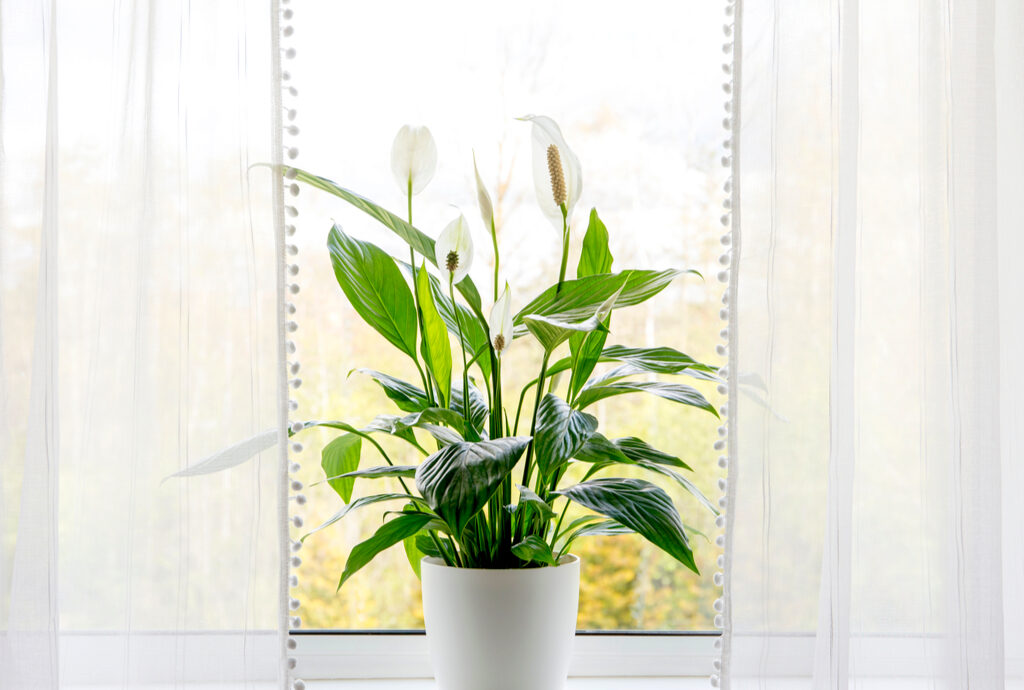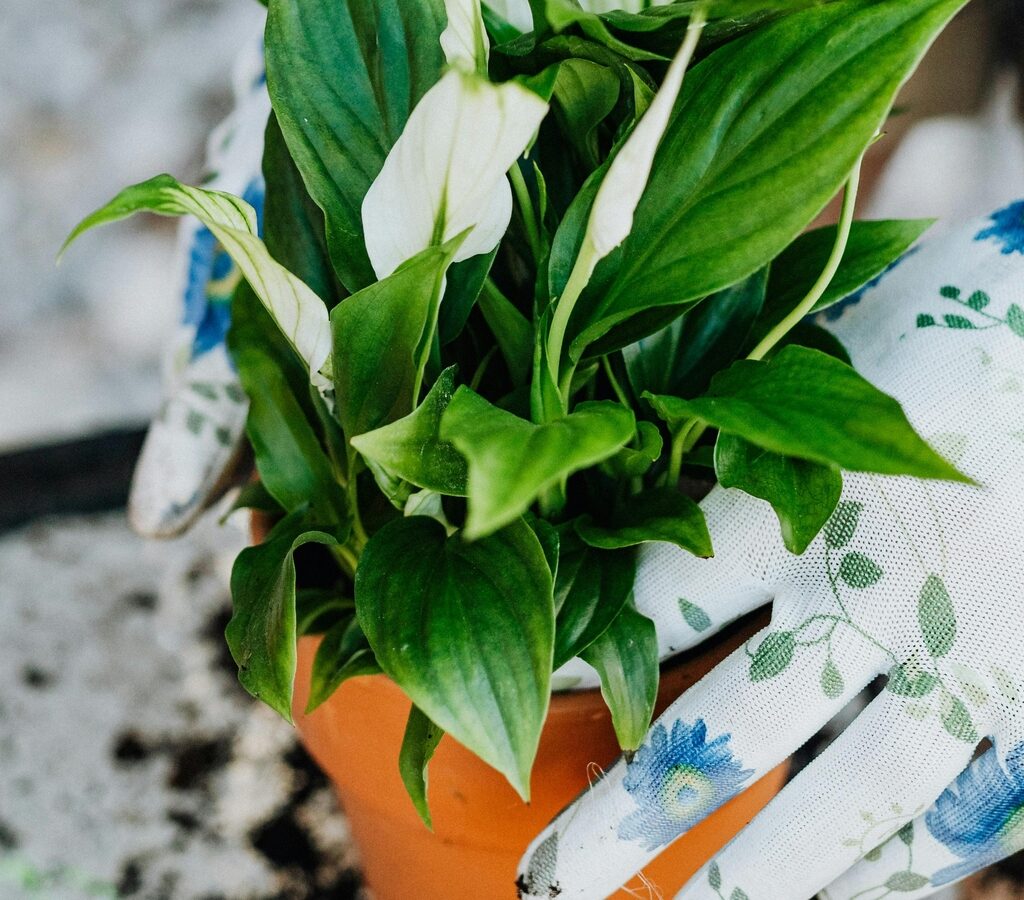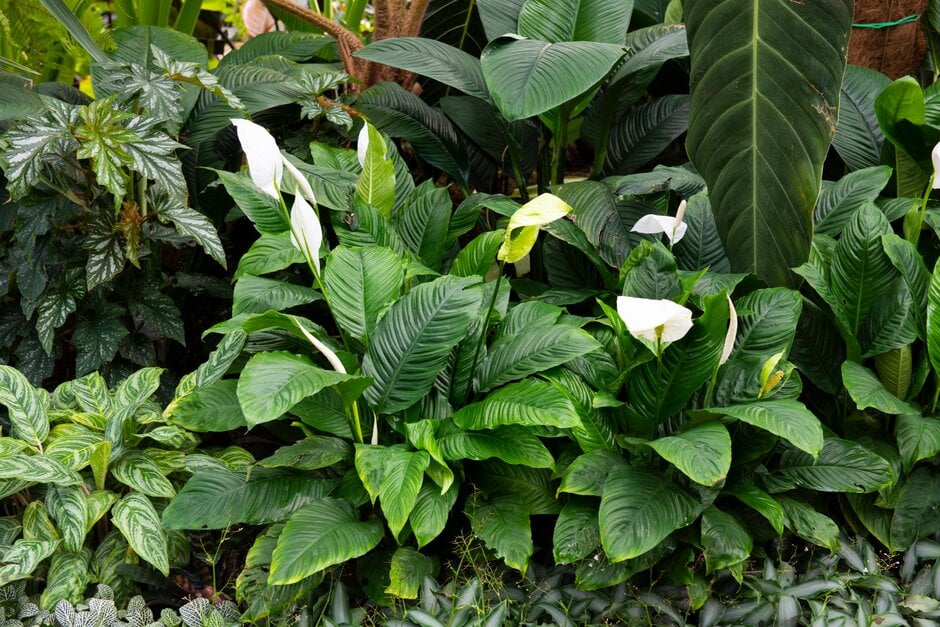If you’re searching for a houseplant that’s both beautiful and beginner-friendly, look no further than the Peace Lily (Spathiphyllum). Known for its graceful white blooms, lush green leaves, and air-purifying qualities, the Peace Lily is a classic indoor plant choice loved by gardeners and home decorators alike.
Though it’s often labeled as “easy-care,” a Peace Lily does have a few specific needs to thrive indoors. In this detailed care guide, we’ll cover everything you need to know about how to care for a Peace Lily plant effectively — from watering and lighting tips to common problems and propagation.

About the Peace Lily
Native to the tropical rainforests of Central and South America, the Peace Lily isn’t a true lily but belongs to the Araceae family. Its scientific name, Spathiphyllum, comes from Greek words meaning “spathe leaf,” referencing the plant’s distinctive white spathes (the flower-like bracts) that cradle a central spadix, resembling a delicate white sail.
Not only is the Peace Lily visually striking, but it’s also known for its ability to improve indoor air quality by removing toxins like formaldehyde, benzene, and carbon monoxide — a feature highlighted by NASA’s Clean Air Study.

Ideal Location and Lighting
The Peace Lily thrives in bright, indirect light but can also tolerate lower light conditions, making it perfect for homes and offices with less natural sunlight.
Lighting Guidelines:
- Bright, indirect light is ideal. A north- or east-facing window works beautifully.
- Avoid direct sunlight, as it can scorch the leaves and cause yellowing.
- In low light, the plant may produce fewer flowers but will still maintain lush foliage.
Signs of Poor Lighting:
- Too much light: Leaves turn pale, develop brown spots, or get scorched.
- Too little light: Slow growth and fewer or no blooms.
Tip: Rotate your plant occasionally to encourage even growth on all sides.

Watering Your Peace Lily
Proper watering is the cornerstone of Peace Lily care. These plants prefer consistently moist soil but are sensitive to overwatering.
Watering Guidelines:
- Water when the top 1–2 inches of soil feel dry to the touch.
- Use room-temperature, filtered water if possible, as Peace Lilies can be sensitive to chlorine and fluoride in tap water.
- Reduce watering in the cooler months when the plant’s growth slows.
How Often to Water:
- Typically once a week during spring and summer.
- Every 10–14 days during fall and winter.
Signs of Overwatering:
- Yellow leaves
- Wilting despite wet soil
- Root rot (indicated by a musty smell)
Signs of Underwatering:
- Drooping leaves
- Dry, crispy leaf tips
- Brown edges
Pro tip: The Peace Lily is excellent at communicating its thirst. When leaves start to droop, it’s time to water.

Soil and Potting Needs
A light, well-draining potting mix is essential to keep the Peace Lily’s roots healthy and prevent waterlogged soil.
Best Soil Mix:
- Use a high-quality peat-based potting mix with added perlite or orchid bark for improved aeration.
- The soil should retain moisture without becoming soggy.
Pot Selection:
- Choose a pot with drainage holes.
- Consider using a decorative cachepot, but ensure you remove the inner pot for watering and allow it to drain properly.
Repotting Tips:
- Repot every 1–2 years, preferably in early spring.
- Move to a slightly larger pot when roots start circling the bottom.
Humidity and Temperature Requirements
As a tropical plant, the Peace Lily loves warm and humid conditions.
Ideal Temperature:
- Between 65°F and 80°F (18°C to 27°C).
- Avoid cold drafts and sudden temperature drops.
Humidity Needs:
- Prefers humidity levels of 50% or higher.
- Mist leaves regularly, use a pebble tray, or place a humidifier nearby, especially in winter when indoor air tends to be drier.
Tip: Browning leaf tips are often a sign of dry air or chlorine sensitivity.
Fertilizing Your Peace Lily
Though not heavy feeders, Peace Lilies benefit from occasional fertilizing during their growing season.
Fertilizing Schedule:
- Apply a balanced, water-soluble houseplant fertilizer every 6–8 weeks during spring and summer.
- Dilute the fertilizer to half the recommended strength to avoid over-fertilizing, which can cause brown leaf tips.
Avoid fertilizing in fall and winter when the plant is not actively growing.
Signs of Over-Fertilizing:
- Brown, scorched leaf tips
- Crusty white deposits on the soil surface
Pruning and Grooming
Regular maintenance keeps your Peace Lily looking its best and promotes healthy growth.
Pruning Guidelines:
- Remove yellow or brown leaves at the base of the stem with clean, sharp scissors.
- Cut spent flowers at the base once they fade.
Grooming Tips:
- Wipe leaves occasionally with a damp cloth to remove dust and improve photosynthesis.
- This also helps prevent pests like spider mites and mealybugs.
Propagation
Propagating a Peace Lily is straightforward through division.
How to Propagate by Division:
- Remove the plant from its pot and gently shake off excess soil.
- Locate natural divisions in the root clump, each with a few leaves and healthy roots.
- Use clean, sharp scissors to separate the sections.
- Plant each section in fresh, moist potting soil.
- Water lightly and place in a warm, shaded area for a few days to recover.
Best Time to Propagate:
Spring or early summer when the plant is actively growing.
Common Problems and How to Fix Them
1. Yellow Leaves:
Usually caused by overwatering or poor drainage. Check soil moisture and drainage holes.
2. Brown Leaf Tips:
Can be due to dry air, underwatering, or chlorine sensitivity. Increase humidity and use filtered water.
3. Drooping Leaves:
A natural response to thirst or overwatering. Check the soil before watering.
4. No Blooms:
Often a result of insufficient light or lack of nutrients. Move to a brighter location and consider a diluted fertilizer.
5. Pests:
Occasionally affected by spider mites, aphids, or mealybugs. Wipe leaves with insecticidal soap or neem oil.
Benefits of Having a Peace Lily
✔ Air Purification:
Removes common indoor pollutants, improving air quality.
✔ Easy to Care For:
Forgiving and communicative, making it perfect for beginners.
✔ Beautiful Blooms:
Adds elegance and freshness to any space.
✔ Symbol of Peace and Purity:
Often gifted during times of remembrance or housewarming.
Final Thoughts
The Peace Lily is a timeless houseplant favorite for good reason. With its lush foliage, delicate white blooms, and air-cleansing abilities, it brings tranquility and beauty to any room. By following these effective care tips — providing the right light, moisture, temperature, and occasional grooming — your Peace Lily will thrive and reward you with year-round greenery and occasional blooms.
So, whether you’re new to indoor gardening or a seasoned plant parent, the Peace Lily is a wonderful, low-maintenance companion for your home.





Leave A Comment